This is, I believe, the last gout of photos that I wanted to cover before moving on to the beach trip, which will probably encompass several posts. It will be a little reptile-heavy, so prepare yourself as you see fit. Gird your loins, or whatever. Maybe make a pot of tea. Whatever it takes.
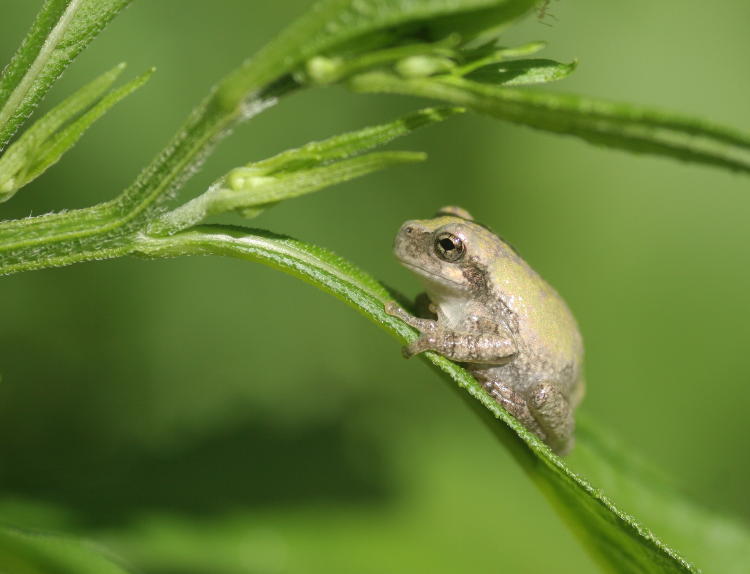
We’re opening with a juvenile Copes grey treefrog (Hyla chrysoscelis) that the Indisputable Mr Bugg was happy to spot during an outing many weeks back, and I’ve given him the chance to post his own images of it but we all know how that turns out. Yes, it’s tiny, but we know it’s a grey treefrog from the pale blotch under its eye, and we know it’s a Copes subspecies because… well, we don’t, actually, because about the only way you can tell is from their calls, and this one wasn’t calling and is probably too young to be thinking about that anyway, but the Copes variety is the only one that I’ve ever found in this area, so we’re going with that with less misplaced confidence than your average preacher.
On the same outing, I witnessed some peculiar behavior from a selection of carpenter bees. It started by finding a solitary one just hanging out on a salvia plant, which was slightly odd because it was a plenty warm day and there was lots of apidaen activity around. I was leaning in to see if it had run afoul of a crab spider or the like (this was the same outing with most of the lynx spiders,) when another appeared, hovering around with some apparent interest in its companion and not the flowers.
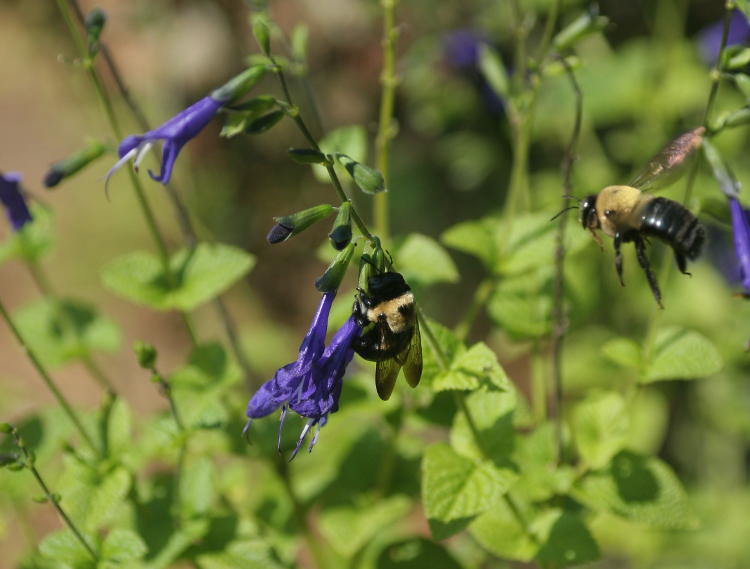
The second bee had only a moment to hover very specifically around its motionless brethren, before a third appeared on the scene, with the same focus on the first.
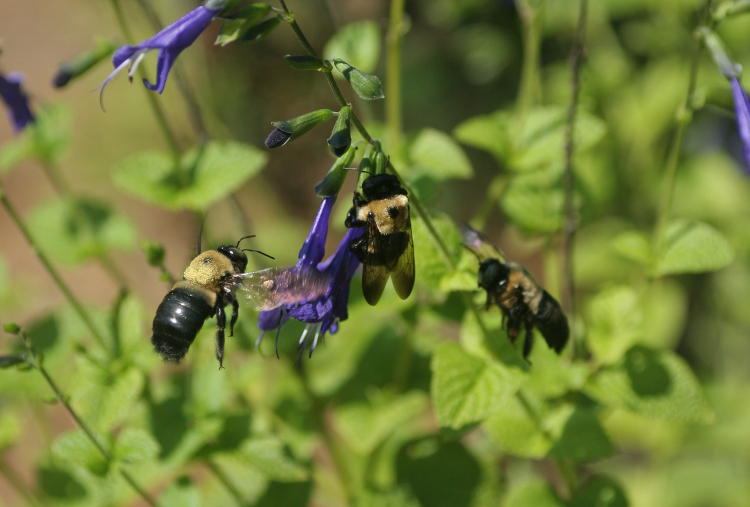
This was a state of affairs that was unacceptable to the second, and in a flash there was a schoolyard scrum taking place in midair, while the first slumbered on (or whatever) peacefully.

It would be very easy to believe that I had witnessed some kind of mating behavior, except that the first was clearly not a queen of any type, and anyway I’m moderately certain that takes place in the hive. Perhaps it was a thwarted mugging.
Another frog.
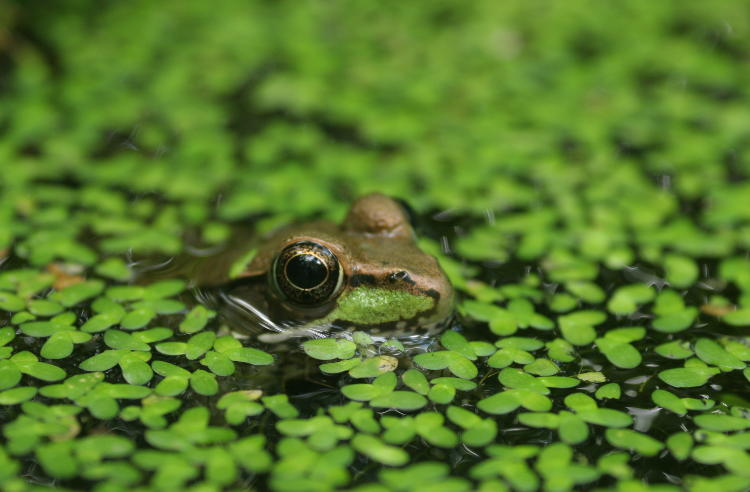
The same outing was a two-parter as we switched locales, so while the first four photos were in Gold Park in Hillsborough, the next few were in the NC Botanical Garden in Chapel Hill, and in fact, this particular photo is a revisit of one from many years ago that I’ve used to illustrate a lot of different things, but primarily the nature of selective framing. What’s in the frame gives us the impression of the setting, and what’s outside of the frame doesn’t count – in this case, it’s the edges of the pond liner that this green frog (Lithobates clamitans) was hanging out within, a very popular spot for amphibian species. A slow approach will often net you better closeups than can typically be achieved in the very setting that the viewer imagines this to be. Was that sentence tortured enough?
Just in case you didn’t know, it’s anole season around here, “here” being, “within the confines of this blog,” so we have a few more to feature, and they won’t be the last either. Part of this is because I like the little buggers, and would love to get some established in the yard but as yet I don’t think we have the kinds of plants they prefer. So for now, I seek them out in other locations, like below.
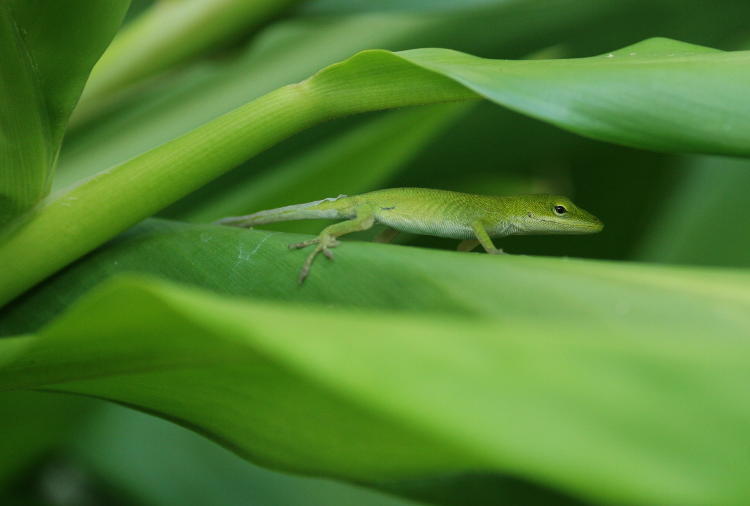
This juvenile Carolina anole (Anolis carolinensis) was wary of our presence as it flitted about the leaves and stems of a favored banana plant – which makes me wonder, because the NC Botanical Garden is specific about using native plants, so this tells me that this variety of banana tree, at least, is from North Carolina, which seems odd. But whatever – I can research that later. For now, we take note of the tail of this one, showing a detail that I failed to observe at the time until the anole was being too spooky to get close to, keeping me from getting a good photo of it. Having shed recently, or presently in the process thereof (is there a beginning and end to such things?) the anole was showing a tattered sock of dead skin down the length of its tail.
Then I went back through the images after getting home, and saw that I had captured some better detail, but hadn’t realized it at the time.
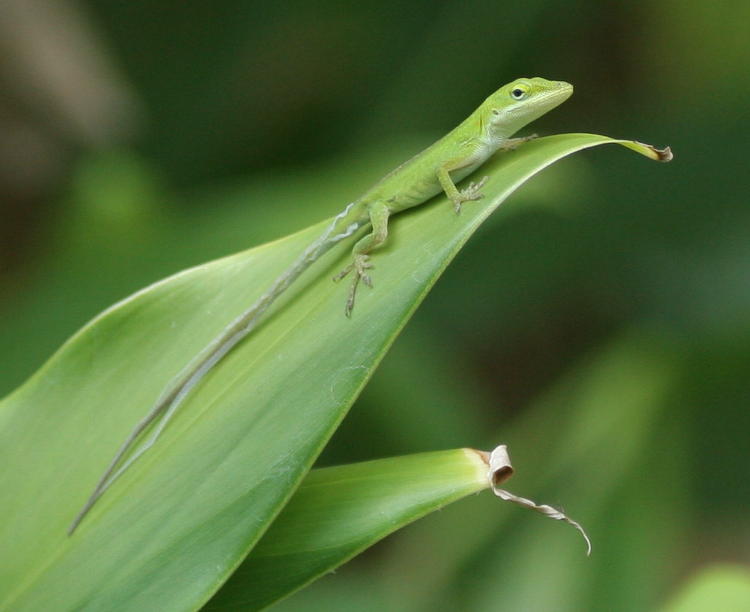
In my feeble defense, I’m usually concentrating on the eyes, since those are what we typically focus upon and so should be the sharpest part of the image, plus I was timing a decent pose from a fairly active small reptile. But that’s just whinging – I should have spotted it sooner.
As you should be able to tell from the lighting here, the sun wasn’t bright enough to provide that silhouette I am now after.
We’ll go a bit older for the last two, all the way back to August 3rd, a couple of images that I’ve had waiting in the folder. I spent a long time only seeing the Chinese mantises (Tenodera sinensis) occasionally in the yard, nowhere near as often as I might have expected given the large number of egg cases that I’d distributed in the spring, but this may only demonstrate that there’s a point where the population hits saturation, especially since I suspect they’ll prey on one another. But one made an appearance while I was armed, so to speak, so I shot it.
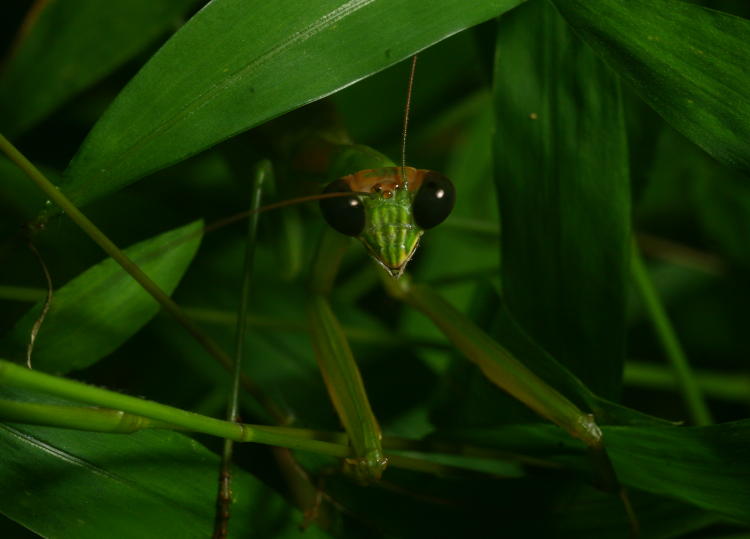
The dark eyes tell us that this was taken at night, and the sardonic expression tells us the mantis wasn’t too impressed with my stalking skills. At least that’s how I’m interpreting it – maybe it simply doesn’t think much of Canon equipment. In which case it’s a doodyhead.
That wasn’t the only wry look I got that night either, as I found a tiny juvenile Copes grey treefrog (I’m absolutely sure) perched on the flexible downspout; this one is even smaller than the first, and in such a position that I could maneuver around for the portrait.
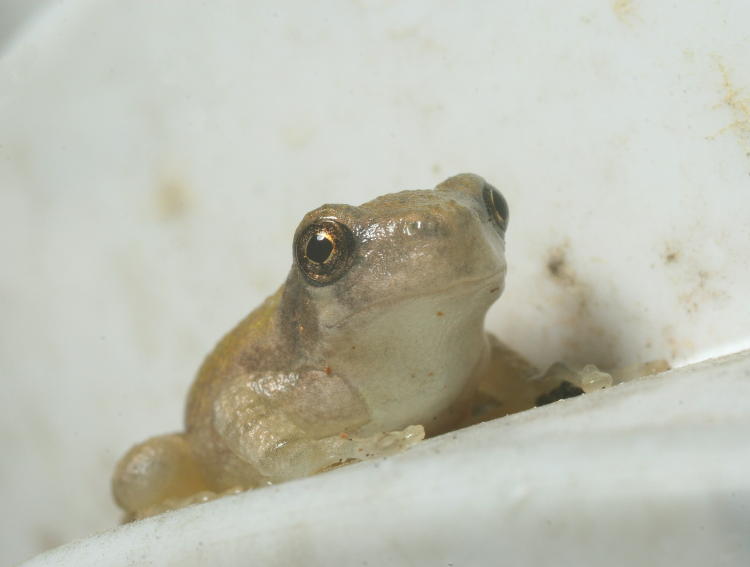
Did you grow up on the Peanuts comic strip? That rippled mouthline is pure Charlie Brown, though the wall-eyed look is more Spongebob. Or maybe Marty Feldman.
By the way, I feel the need to point this out to those who have never had the fortune of handling either. While snakes may be as shiny as this, they are always smooth and dry, often surprising people that handle them for the first time and expect them to be slimy, like a worm or slug. But treefrogs rely on moisture to give them grip (at the very least,) and so really are damp and a little sticky, which the flash reflections bring out accurately enough. Like most amphibians, they’ll become even more so with handling, because a primary defense is to pee on you. Just so you know.



















































